

Table of contents
- spring
- Onion and bulb flowers
- perennials
- fruit trees
- trees / large shrubs
- Summer
- Bee friendly perennials
- shrubs
- Bee plants flowering in autumn
- Bee pastures for the winter
There is hardly a group of plants that does not contain bee-friendly plants. Nevertheless, there are also those that form little or no nectar. This refers to plants with double flowers, so-called cultivated forms.
spring
In spring, nature begins to wake up from hibernation and starts to greet the insects with bee-friendly flowers.
Onion and bulb flowers
Spring Crocus(crocus vernus)

- Also known as spring saffron
- Flowering time: March to April
- Flower violet, yellow or white
- Growth height: 6-15 cm
- Naturalize easily
daffodil(Narcissus pseudonarcissus)
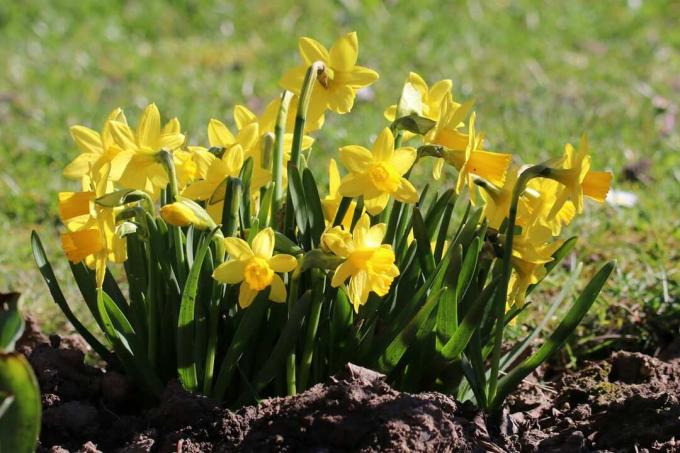
- A classic among spring bloomers
- First flowering daffodils of the year
- Flowering time: March to April
- Flower colors: yellow or white
- Growth height: 40-60 cm
snowdrop(Galanthus)
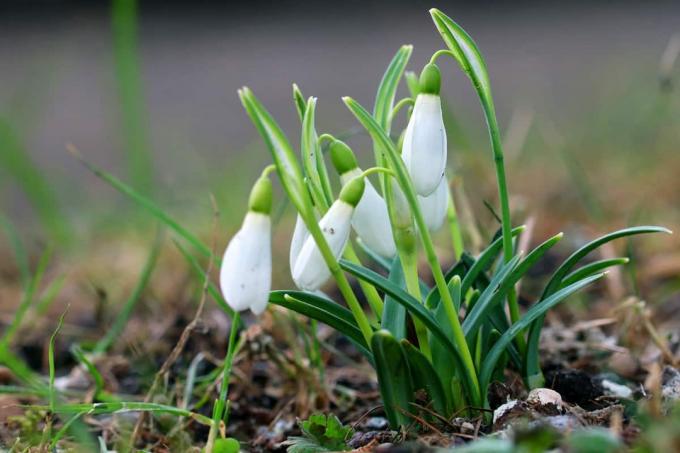
- Flowering period: January/February to March
- flowers: snow-white
- Good for naturalising
- Takes time to establish itself
- stands under natural reserve
Tip:
Snowdrops are poisonous in all parts of the plant, but especially the bulb.
grape hyacinth(muscari)

- Forms attractive carpets of flowers
- Blue flowering varieties best known
- Flowering: between March and May
- Growth height 15-30 cm
- Wild in places that suit her
Tip:
The less the soil is tilled, the easier it is for the grape hyacinth to overgrow.
winterling(Eranthis hyemalis)

- Small yellow cup flowers
- Flowering time: February to March
- Growth height: 5-15 cm
- Propagation by self-seeding
- Dense carpets on humus-rich soils
perennials
blue pillow(Aubrieta x cultorum)
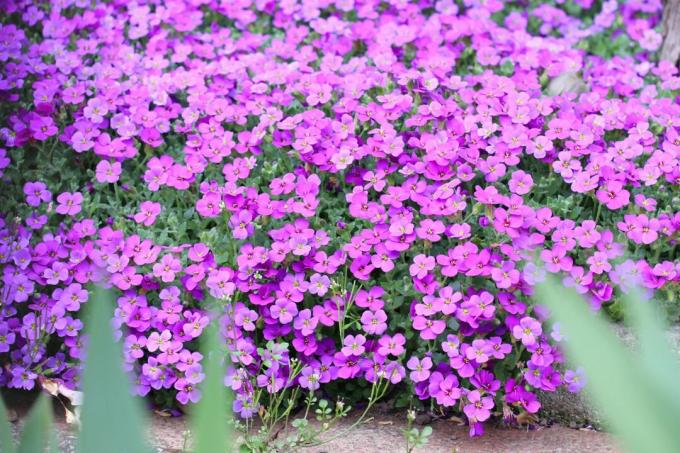
- Vigorous 8-10 cm high cushion perennial
- Growth: creeping, low, evergreen
- Flowering time: April to May
- Simple, racemose flowers
- Different shades of blue, violet, red, pink
Sweet Violet(Viola odorata)
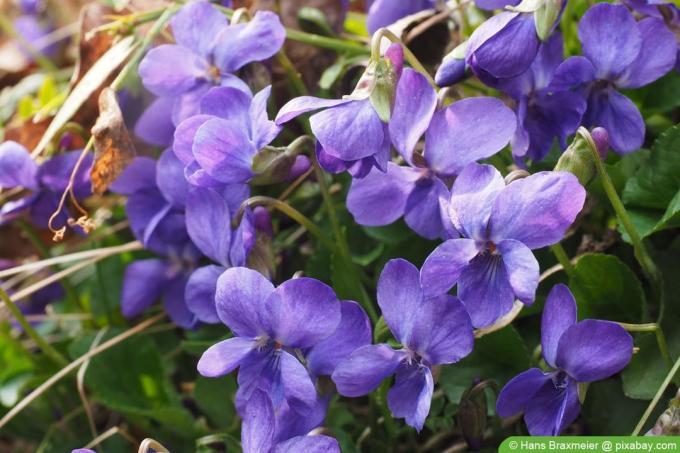
- Fragrant ground cover for partially shaded locations
- Growth height: 5-15 cm
- Flowering time: March to April
- Flower colors: white, pink, violet
- Propagation by self-seeding
crawling bugle(Ajuga reptans)
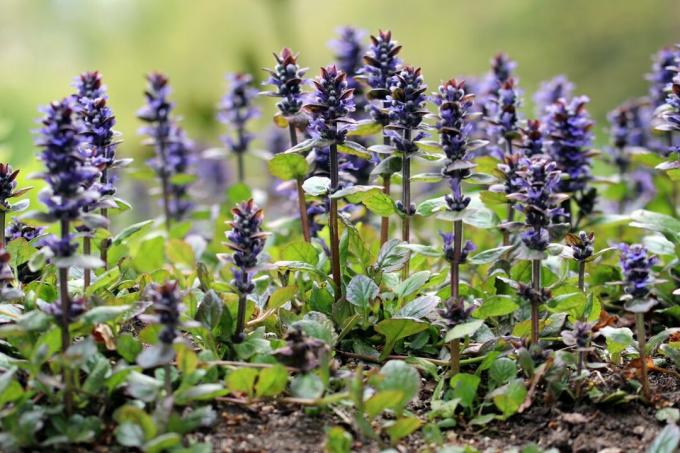
- Wild perennial for natural gardens
- Rich supply of nectar
- Growth height up to 20 cm
- Flowers spike-shaped, blue
- Flowering time: April to May
pasqueflower(Pulsatilla vulgaris)
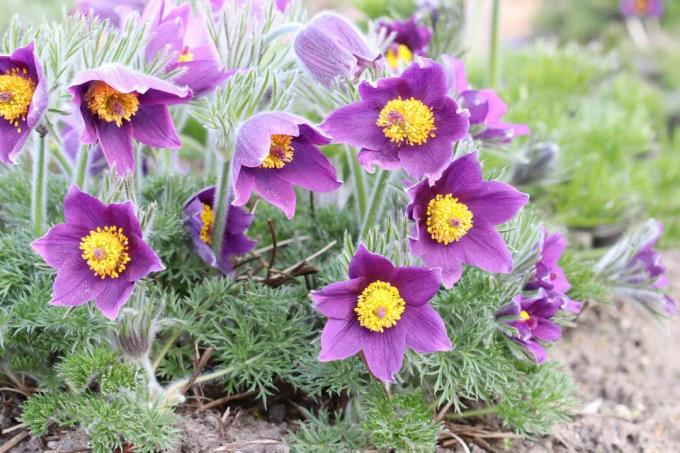
- Blooms from March to April
- Bell-shaped single flowers
- Flower colors: violet, red, pink, white
- Propagation by self-seeding
- Growth height: 5-20 cm
deadnettle(lamium)

- Valuable wild perennial for low-light shady beds
- Flowers arranged in false whorls
- Flowering time: Depending on the variety, from March to autumn
- Flowering only from the second or third year
- Good nectar and pollen count
Meadow bittercress(Cardamine pratensis)

- Bee-friendly wild perennial
- Ideal for wet wildflower meadows
- Single racemes of white to pink flowers
- Flowering time: April to May
- Growth height: 10-50 cm
fruit trees
Apple(penalty)

- Attractive to wild and honey bees
- Lots of nectar and pollen
- Flowering months: April, May, June
- The right location and regular pruning can extend flowering windows
Tip:
Ornamental apples that set fruit are also said to be good bee pastures.
Pear(pyrus)
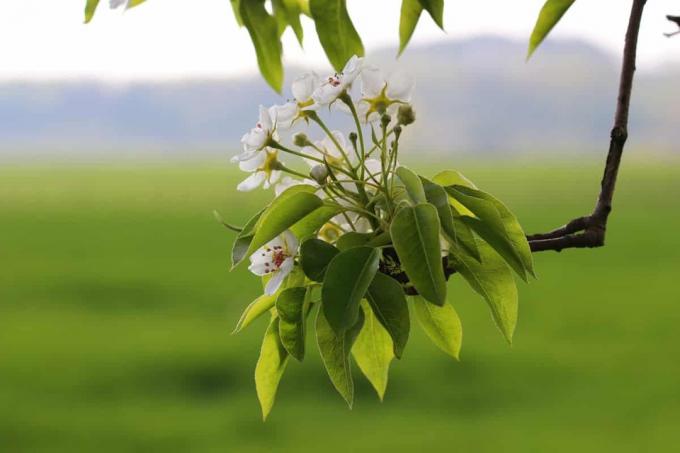
- Blooms just before the apple
- Good pollen and nectar donor
- Usually one pollinator variety required
- Bees are the most important pollinators
- Pay attention to variety
blueberry(Vaccinium myrtillus)

- Flowering period: May to July
- Flower pitcher-shaped, greenish or reddish
- Good nectar value
- Growth height: about 50 cm
- Requires acidic soil
Summer Raspberry(Rubus idaeus)
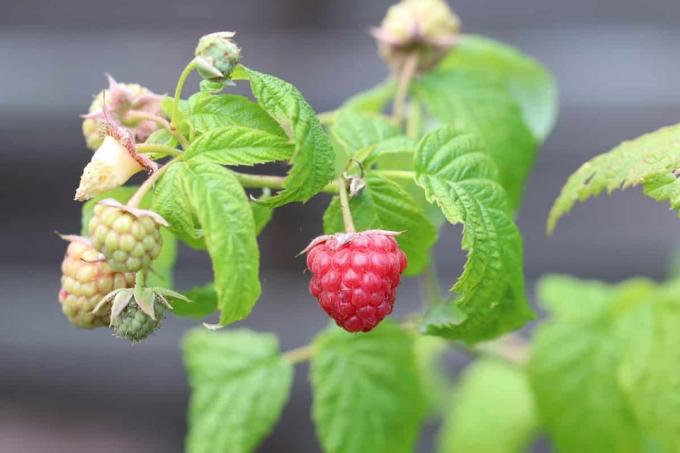
- Flowering period from May to June
- Flower simple, cupped, white
- Nectar contains 46% sugar
- Height growth up to 180 cm
- Restricted flowering in the shade
Tip:
After a long standing period, plant raspberries again on this soil at the earliest after four years.
gooseberry(Ribes uva crispa)
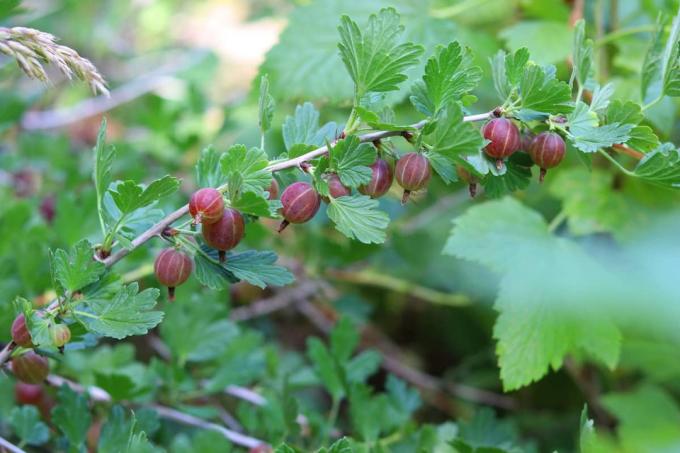
- Very attractive to wild bees, wasps and bumblebees
- Flowering months: March and April
- Flowers rather inconspicuous
- Berries interesting for birds
- Growth height: up to 200 cm
sweet and sour cherries(prunus)
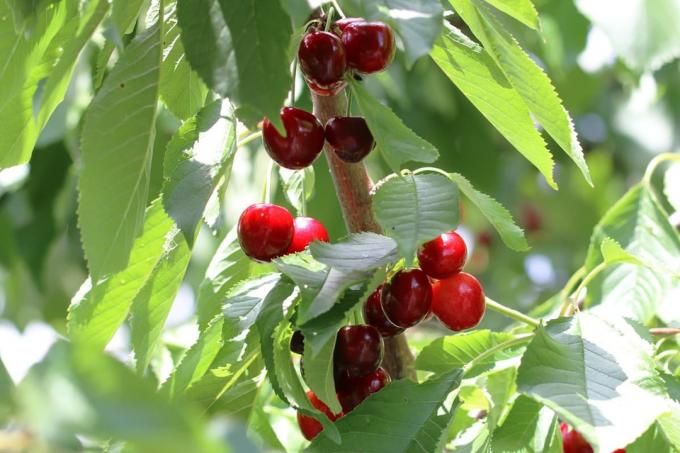
- Sweet cherry blossoms from April
- Sour cherry from April to May
- Sour cherry nectar lower sugar content
- Has little effect on pollination
trees / large shrubs
barberry(Berberis vulgaris)
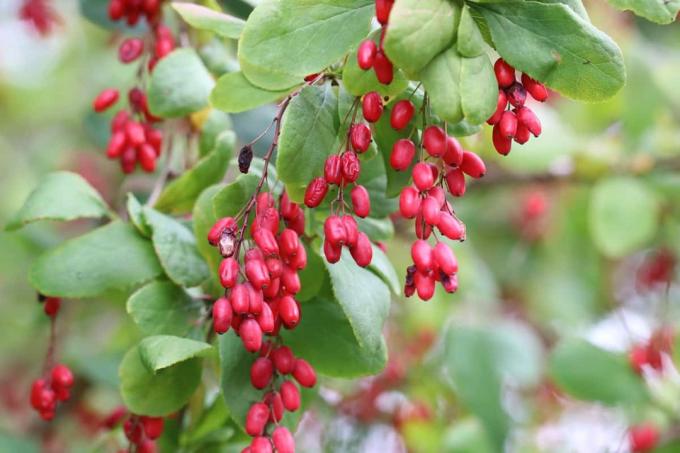
- Attractive flowers and berries
- Flowering period: early May to June
- flowers: cupped and bright yellow
- Average nectar and pollen value
- Growth height 100-250 cm
Tip:
The root and stem bark of the barberry contain toxic alkaloids.
service pear(Amelanchier ovalis)

- Flowers appear before the leaves
- White, tart-scented, star-shaped flowers in April
- Offer lots of nectar
- Up to 200 cm high
- Edible berries very popular with birds
hazelnut(Corylus)
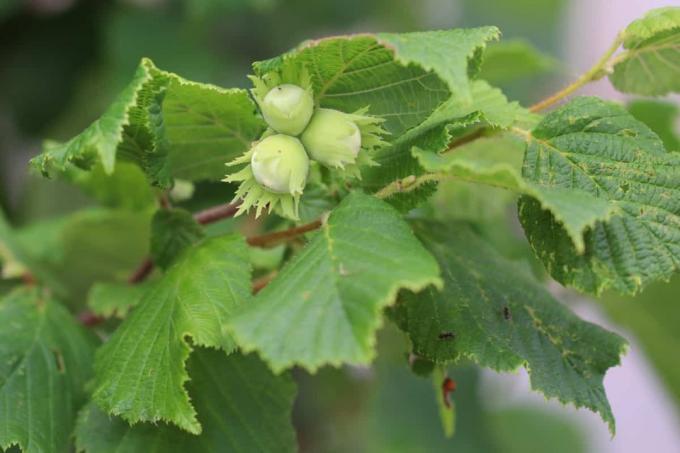
- Flowering time: early February to late April
- Flowers before leaves emerge
- Abundant pollen only on male flowers
- Female flowers contain no nectar
Blackthorn / Sloe(Prunus spinosa)
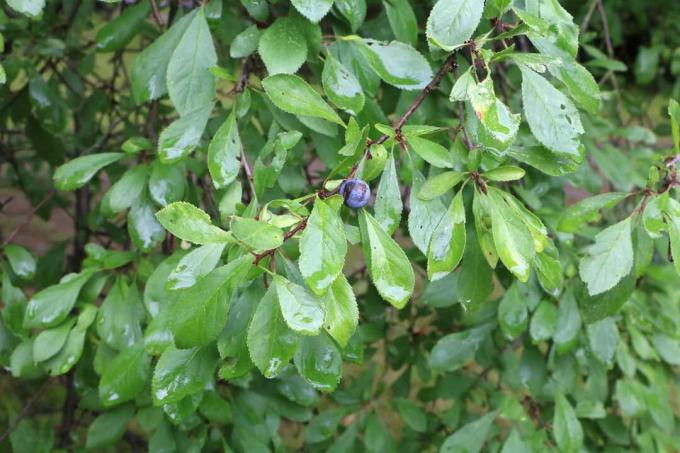
- Native wild shrub
- Growth height: 150-400 cm
- Flowers simple, small, white, with a fine almond fragrance
- Flowering time April to May
- Blooms before cherry, pear and apple
Tip:
The fruits of the sloe can only be eaten raw after the frost.
Silver Maple(Acer saccharinum)
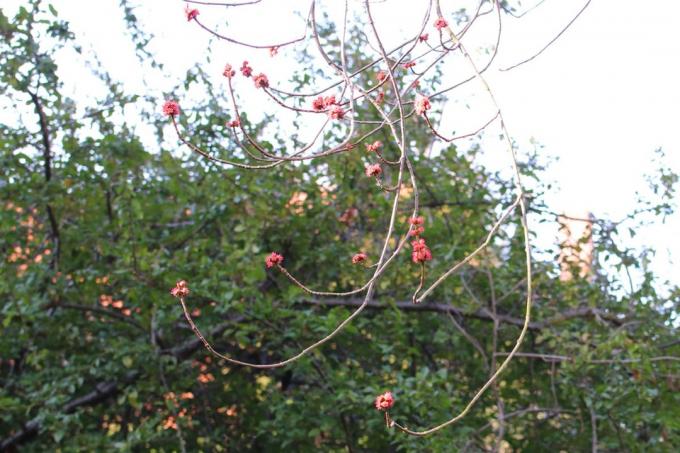
- Very valuable nectar donor
- Flowering: late March to March/April
- Flowers earlier than other maple species and grows faster
- Orange flowers
- Growth height: approx. 40 m
pastures(Salix)

- Early flowering willows, very good bee pastures
- Lots of pollen and nectar
- Female and male inflorescences
- Protein-rich pollen food for rearing the brood
- Flowering time: mid-February to April
Summer
Summer time is flowering time, here you will find the most bee-friendly plants for the hot season.
Bee friendly perennials
beard flower(Caryopteris clandonensis)
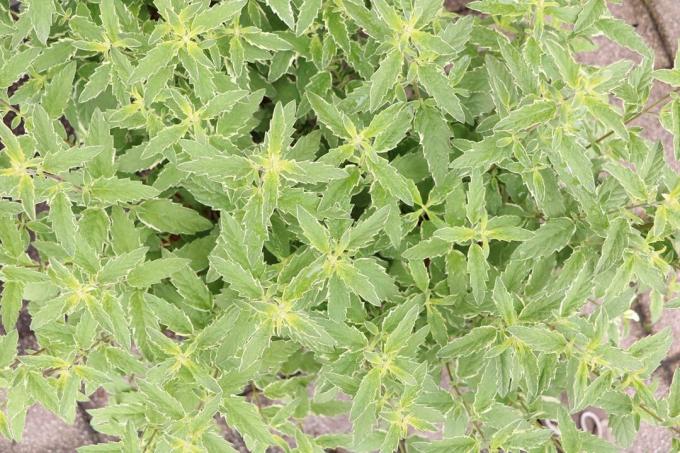
- Naturalized neophyte
- High pollen and nectar value
- Grows 50-100 cm high
- Flowering period: August to September
- Deep blue, delicately scented flowers
loosestrife(Lythrum salicaria)
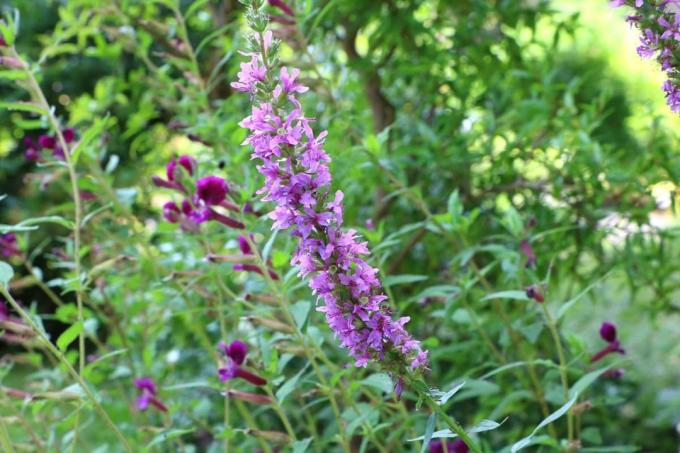
- Attractiveness for wild bees very high
- Flowering period: June/July to September
- Bright dark pink flowers, false spikes
- Rich supply of nectar
- Optimal watering promotes nectar formation
borage(Borago officinalis)
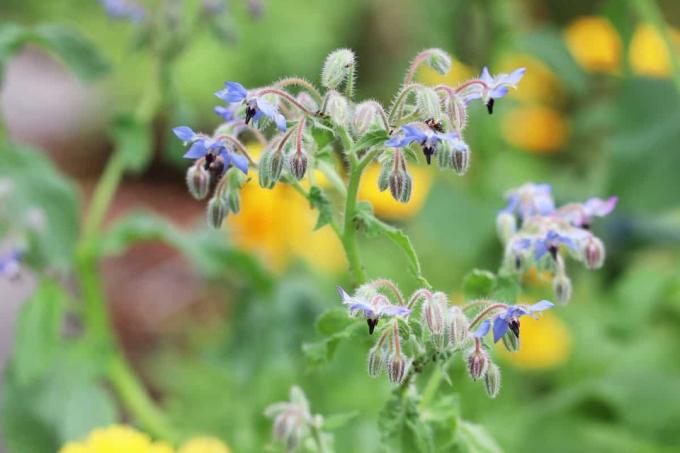
- Naturalized neophyte
- Star-shaped flowers, white or blue
- Flowering months: June, July, August, September
- Nectar value significantly higher than pollen supply
- Growth height up to 80 cm
goldenrod(solidago)

- Valuable plant for bees and insects
- Large, sulphurous yellow flower spikes
- Flowering period: July and September/October
- Rich supply of nectar
- Growth height: 30-150 cm
catnip(Nepeta cataria)

- Flowering period: July to September
- Spike-shaped, mostly violet inflorescences
- Emit an intense fragrance
- Cutting back close to the ground after the main bloom encourages a second bloom
- Growth height about 70 cm
cornflower(Centaurea cyanus)
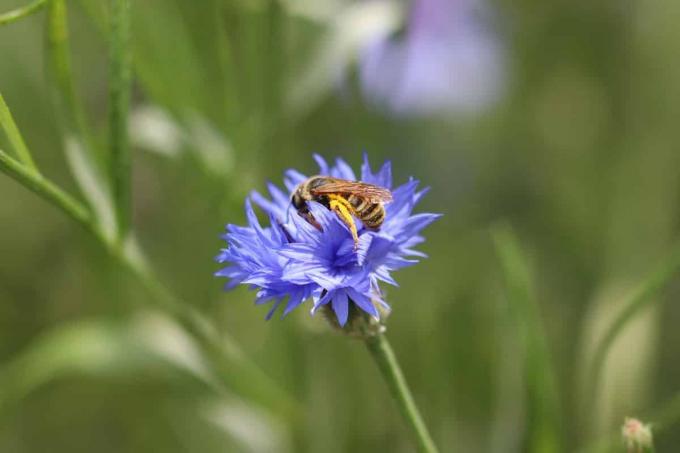
- Flowering period: July to October
- Round flat inflorescence, mostly blue
- Good nectar and pollen value
- Growth height: 30-80 cm
- High attractiveness for wild bees
Longleaf Speedwell(Veronica longifolia)

- Large Speedwell species
- One of the best native nectar plants
- Growth height 40-120 cm
- Blue inflorescences (flower candles)
- Flowering period: July to August
lavender(Lavandula angustifolia)
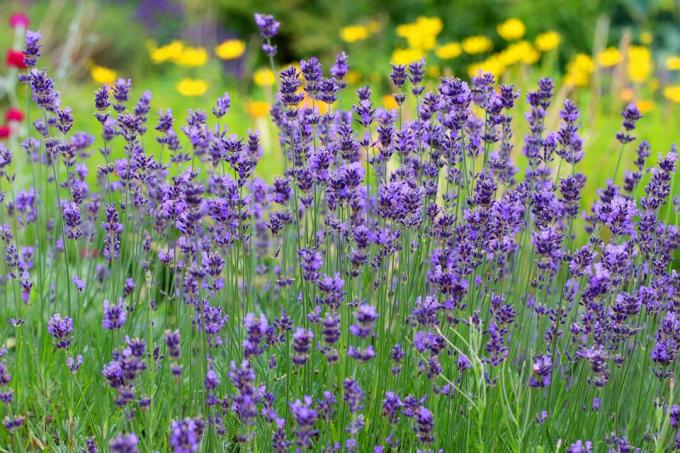
- Mostly blue-violet, aromatically scented flowers
- Flowering period: June/July to August
- Subshrubs up to 60 cm high
- High nectar value
lupine(lupinus)
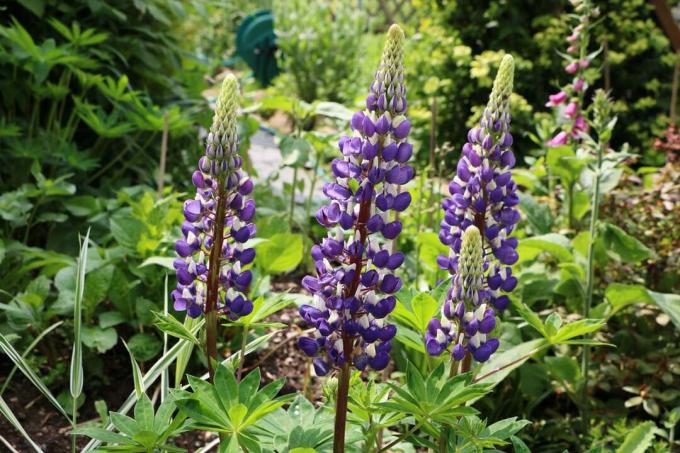
- Classic cottage garden plant
- Flowering period: May to June
- Flower candles with small butterfly flowers
- Flowers rich in nectar attract bees and bumblebees
- Grows upright, unbranched, 80-120 cm tall
Tip:
The lupine has soil-improving properties. It enriches it with nitrogen.
coneflower(Echinacea purpurea)
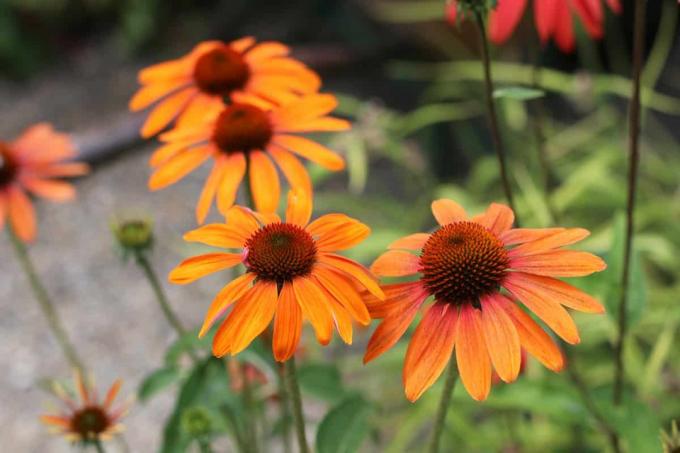
- One of the most impressive bee pastures
- Up to 300 tubular flowers
- Good nectar and pollen value
- Flowering period: July to September/October
- Growth height 80-100 cm
cranesbill(geranium)

- Growth height: 15-100 cm
- Flowering period: May to October
- Flower colors: white, pink, crimson, blue
- Pollen color lemon yellow
- Often clear veining on petals
wild mallow(Malva sylvestris)
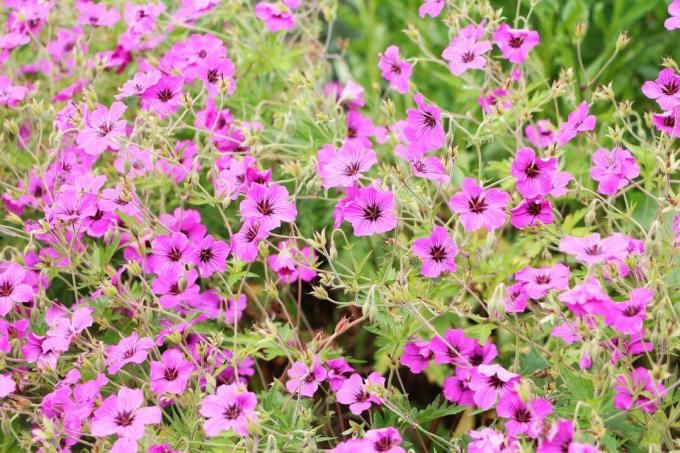
- Also known as cheese poplar
- Flowering period: June to September
- Flowers: pink with dark pink vertical stripes
- Abundant pollen and nectar
- Growth height 30-120 cm
meadow sage(Salvia pratensis)

- Good supplier of nectar and pollen
- Flowering time: June to August/September
- Flowers mostly blue
- Other colors: white, pink, purple
- Growth height 40-60 cm
Wild Rocket, Arugula(Diplotaxis tenuifolia)
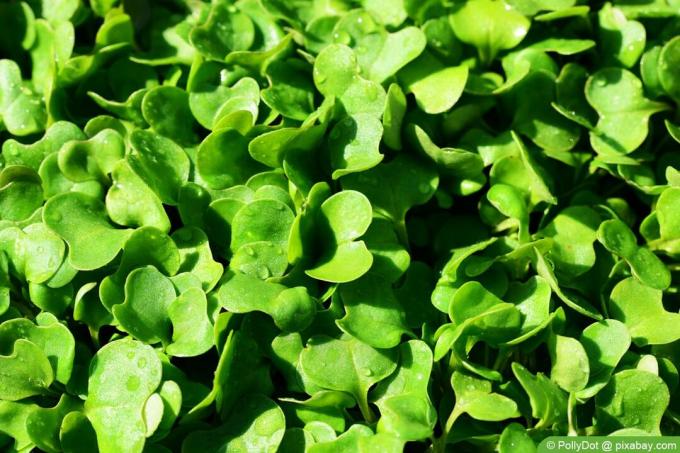
- Excellent bee pasture
- Visited by bees and hoverflies
- Flowering period: May to September
- Yellow flowers typical of cruciferous plants
shrubs
snowberry(Symphoricarpos albus)
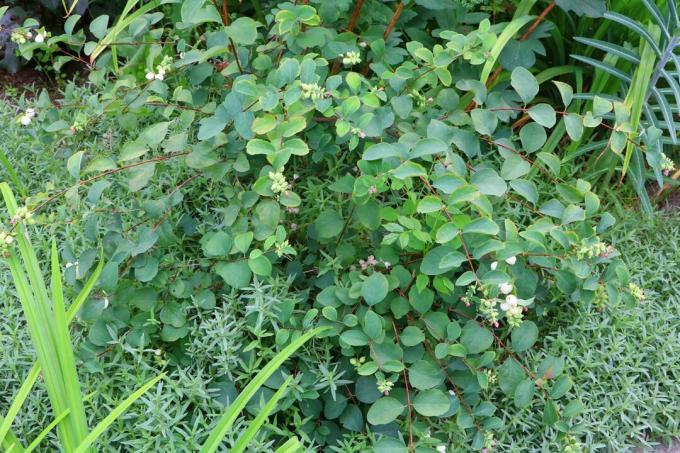
- Undemanding bee shrub
- Flowering period: June to September
- flowers: bell-shaped, pink
- Slightly toxic
- Growth height: 120-200 cm
blackberry(Rubus)

- Flowering period: May to August
- White to light pink flowers
- Good nectar and pollen value
- Growth height: 50-300 cm
heather(Calluna vulgaris)
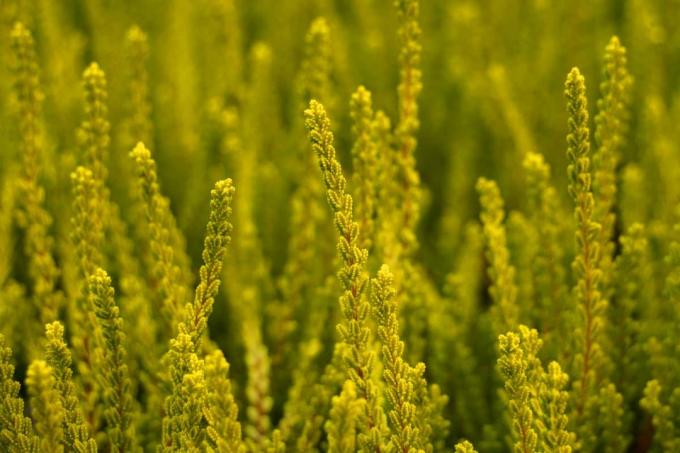
- Richly branched small shrub
- Flowering months: June to October
- flowers: white, pink to crimson
- nectar value high
- Growth height: 15-50 cm
Bee plants flowering in autumn
ivy(Hedera helix)
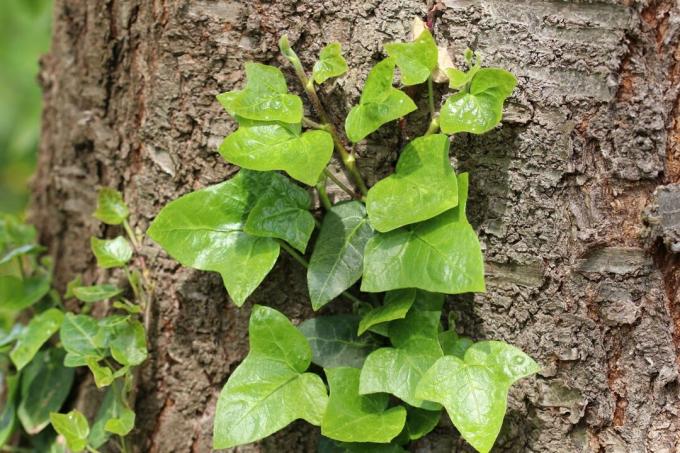
- The only native climbing plant
- Flowers rather inconspicuous
- Flowering time: September until frost
- Last nectar spring of the year
- Regular heavy pruning prevents flowering
autumn asters(Aster)

- Flowering time: early September to November
- One of the last nectar and pollen donors of the year
- Abundant amounts of nectar and pollen
- Flowers: white, violet, red, blue
- Depending on the variety, 25-150 cm high
Low sedum(Sedum cauticolum)
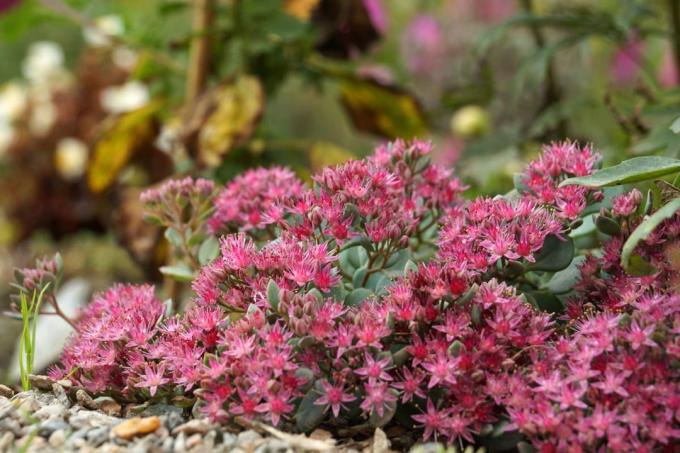
- Flowering time: late summer and autumn
- Bright pink star flowers
- Low, vigorous ground cover
- Up to 15 cm high
Bee pastures for the winter
winter bloom(Chimonanthus praecox)

- Slow growing shrub
- Flowering period: late December to February
- Pleasantly scented winter bloom
- Attracts early-flying bees
- Growth height up to 300 cm
winter honeysuckle(Lonicera purpusii)

- Shrub with overhanging shoots
- Growth height: 150-200 cm
- Flowering period: January to April
- Flower color: creamy white
- Intense sweet scent
winter heath(Erica carnea)

- Also known as snow heather
- Flowering time: December to the end of March
- White or dark pink racemose inflorescences
- Abundant supply of nectar and pollen
- Spreads with age
 Home editorial office
Home editorial office
Learn more about insects
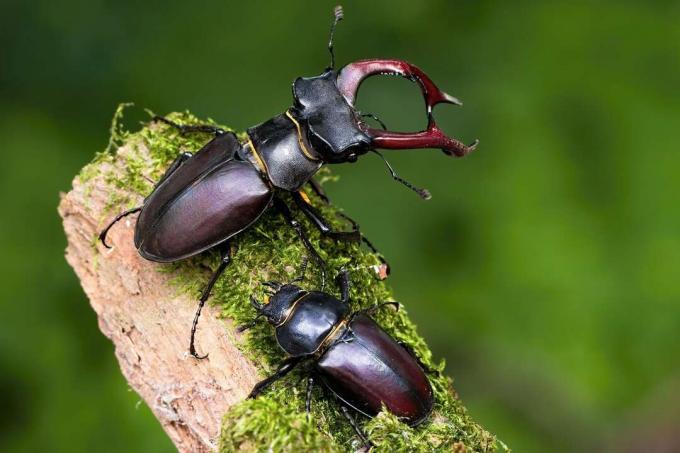
Identify beetles with pincers: 10 native species
Beetles are impressive insects. There are large and small, dark and dazzlingly colorful species. Some have pincer-like upper jaws for crushing or holding prey. The stag beetle is the largest among them. We present 10 native beetles with pincers.

Insect Hotel Filling: 10 filling materials
An insect hotel in your own garden offers numerous insects artificial shelter, nesting and wintering opportunities. They are more than necessary, because they are disappearing more and more as a result of massive human intervention in nature. They are essential for survival.

What do ladybugs eat and drink?
There isn't just one ladybug. Instead, there are several different species, not all of which eat aphids in the classic way. Some are even pure herbivores. Read here what else ladybugs like as food.

Insect species: which insects are there in Germany?
In Germany there are around 30,000 species of insects in various shapes and colours. Of these, there are some that are better known than others. In this article you will find a large list of native insects that shape the image of the country.

Fight field crickets in the lawn | What do crickets eat?
On warm summer days you can hear the chirping of field crickets. In places, the skittish insects appear in heaps. They dig holes in the lawn and their singing can be distracting. What do these strange insects eat? How do you get rid of them?

Spiders in Germany | Identify 18 species of spiders
Spiders cause disgust and disgust in many people. It often helps to take a closer look at these fascinating eight-legged creatures. Identify species that are common in Germany with us and learn about their appearance and habits.

